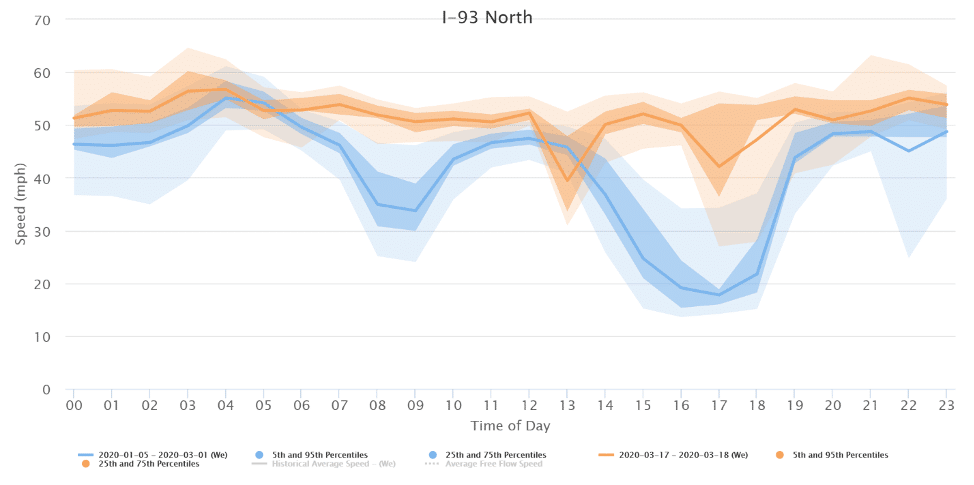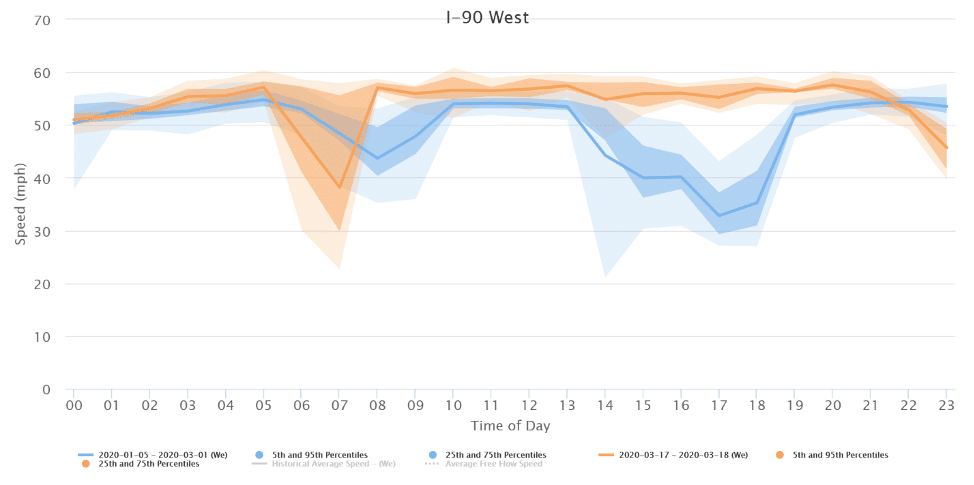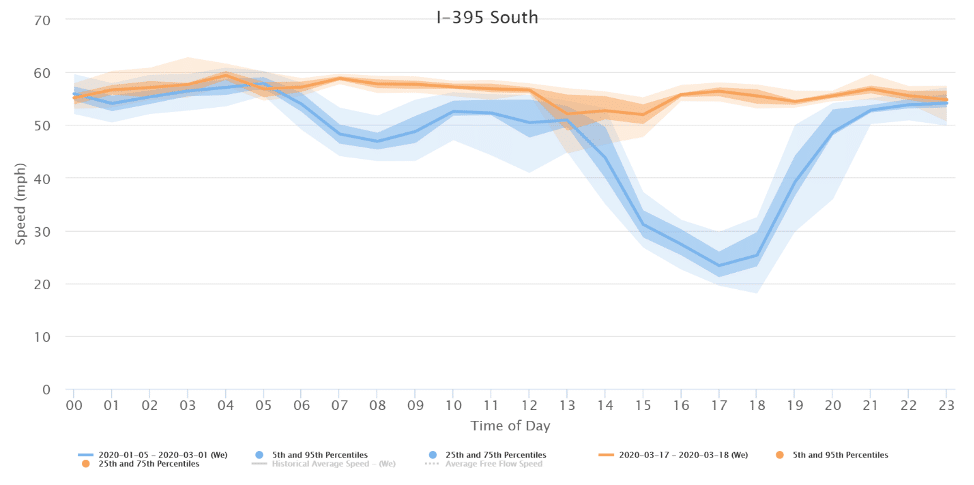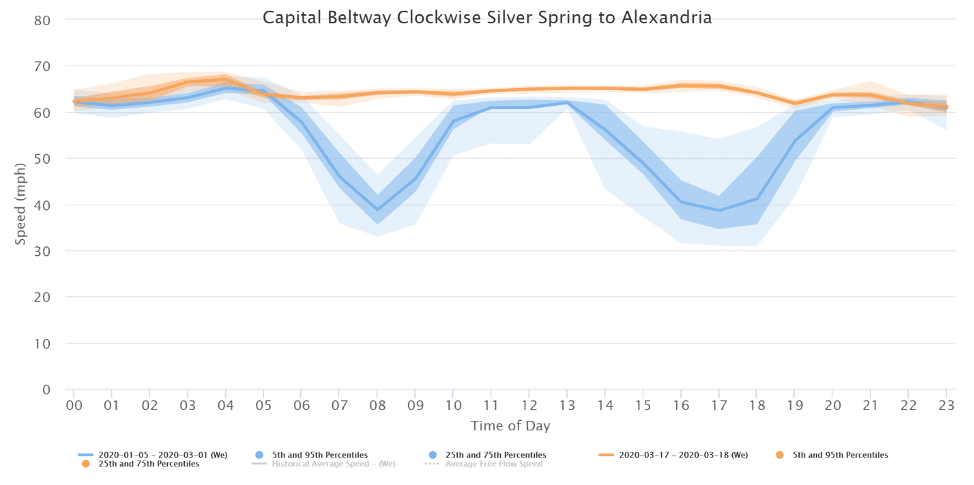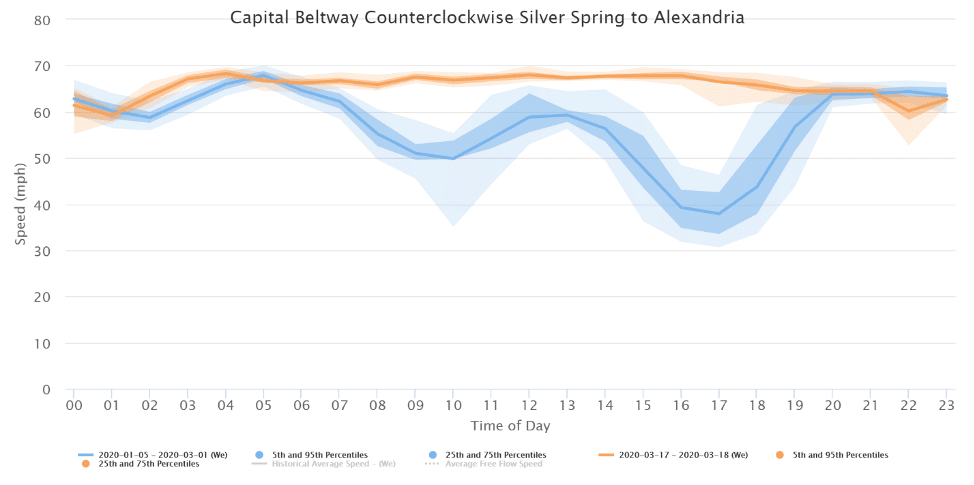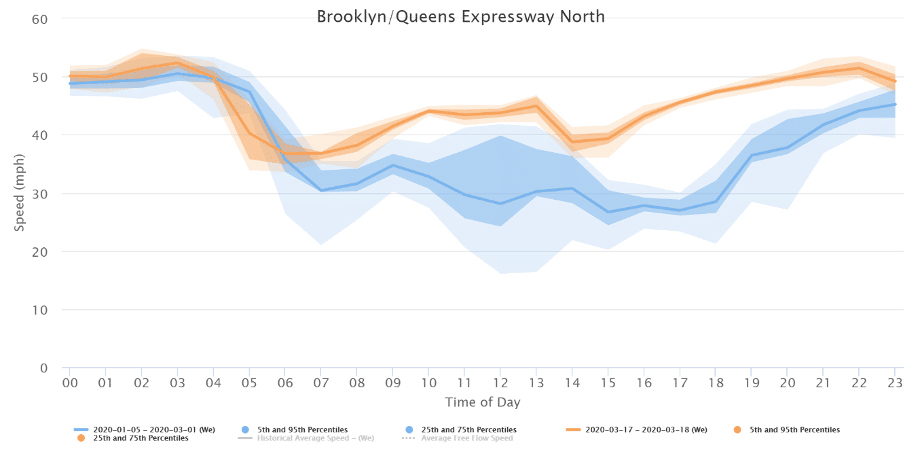
New York City
While curtailments on movement came later to East Coast cities compared to West Coast, the severity of these constraints are now only exceeded by San Francisco’s shelter in place mandate. As of writing New York State now has the largest outbreak of COVID-19 in terms of total cases. The restrictions on movement and corresponding decrease in congestion is clearly revealed in traffic data. On Wednesday, March 18th, traffic speeds on Interstates and Highways in New York City were up to 13 MPH faster than normal during the morning commute period and 14 MPH faster in the afternoon. These differences constitute a 52 percent increase in the morning and 58 percent increase in the afternoon.

The Cross Bronx Expressway is exhibiting similarly dramatic improvements in average travel speeds. Westbound travel has seen significant increases in average speeds throughout the day with morning improvements peaking at 26 MPH faster and 27 MPH faster in the afternoon. Traveling east in the morning, average speeds were up to 22 MPH faster than usual and in the afternoon by up to 13 MPH despite a period of abnormally slow speeds from 4-5 PM.
Boston
Boston is experiencing nearly congestion free conditions on average across its network. In the morning this equates to up to 18 MPH faster and in the afternoon travel speeds up to 21 MPH faster on average.
For travelers on I-93 southbound there was no congestion through Boston on Wednesday and were a remarkable 29 MPH faster in the morning and 37 MPH faster in the afternoon. Northbound drivers also experienced almost no congestion excluding two brief periods in the afternoon. However, am speeds were still up to 17 MPH faster and pm speeds up to 31 MPH faster than normal.
I-90 both directions in Boston was free-flow conditions all day eastbound and most of the day westbound, excluding a brief period of uncharacteristically slow traffic around 7 AM. Eastbound speeds were up to 21 MPH faster in the morning and 25 MPH faster in the afternoon.
Washington DC
Similar to Boston, Washington DC is achieved free-flow travel speeds for all hours of Wednesday. For morning drivers, this equates to speed increases of up to 16 MPH faster than average and 17 MPH faster for the morning and afternoon rush hours, respectively.
Extending the analysis of travel speeds to major corridors in Washington DC, travelers on I-395 did not experience congestion conditions for an hour traveling northbound or southbound. Southbound travelers saw morning speed increases of 11 MPH and afternoon increases of 23 MPH. Northbound drivers saw a remarkable increase of up to 21 MPH on average for both morning and afternoon.
The infamous Beltway also recorded congestion free conditions going both clockwise and counterclockwise between Silver Spring and Alexandria. The morning and afternoon running clockwise saw speed increases of 23 and 27 MPH, while counterclockwise saw increases of 17 and 28 MPH.
Now more than two weeks into the COVID-19 crisis, it appears road networks are entering absolutely congestion free states on major roadways. Both Boston and Washington DC have achieved this distinction, while New York City is still exhibiting some congestion during the peak periods, albeit incredibly reduced from usual. Given these three cities rank amongst the countries most congested, and they are effectively experiencing no congestion on highways and interstates, it likely means urban congestion has ceased to exist or will shortly in the country’s major cities.










